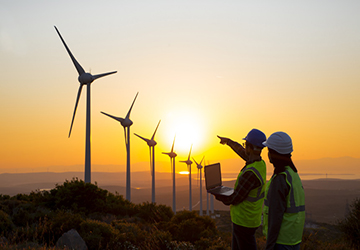Top 5 Innovative Technologies for Environmental Protection
In the face of growing environmental challenges, innovative technologies play a crucial role in safeguarding our planet. These new technologies are changing ecological protection from reducing climate change to preserving biodiversity and sustainable practices.
Here we will explore the top 5 innovative technologies reshaping our environmental conservation approach. What's more, these technologies are making a significant impact as we read.

Plant-based plastic
It is excellent and high time that we put a firm foot towards regular single-use plastic. The new technology has given us plant-based biodegradable plastics. These plastics comprise several by-products of edible plants such as sugarcane, corn, and vegetable oils.
The first benefit of this plant-based plastic is reduced carbon footprint. Unlike other plastics that consume fossil fuel while making, this plastic is reusable and absorbs carbon dioxide during growth, and this results in lower greenhouse gas and decreased climate change.
This plant-based plastic is the ultimate solution to the persistent problem of plastic waste worldwide. Conventional plastic decomposes for centuries, contributing to sea, ocean, and land pollution. While bioplastics break down naturally, it means there is no harm to any ecosystem or wildlife.
In addition, the other benefits. The plant-based plastics are reusable and will not harm food or other storage items, increasing product shelf life.
By promoting this incredible product, we can reduce the use of fossil fuels and limit plastic pollution. But remember that success depends upon proper waste management infrastructure, hygienic production, and consumer awareness.
Agricultural revolution
Agriculture is going through a revolution as various technologies are taking over. The idea of sustainable food production has become a reality as now farmers and other organizations can use satellite images, drones, and sensors along with machine learning algorithms. It helps monitor crop health, fertilizer use, pest control, and flood warnings. This data-driven approach minimizes resource wastage, reduces chemical use, and yields higher crop yields.
Various technologies are creating a change in agriculture, such as remote sensors. Now a farmer can detect moisture levels in the soil before the other round of irrigation. If the group is dry, the farmer waits or provides water to the field. Moreover, multispectral cameras can detect pest invasion giving a chance to make timely decisions.
With the latest advancements, farmers can optimize productivity and minimize environmental impacts.
Internet of Things (IoT): Saving Environment
You must have heard about the popular Internet of Things (IoT). It is truly a revolution and is rapidly changing what we deemed technology. This technology is directly related to sustainability and the environment, and IoT is giving new foundations of change. The IoT is working in the fields of robotics and artificial intelligence, which is altering commercial and industrial procedures. It is making everything environmentally friendly.
Confused? Please take it as the companies are shifting towards digital innovations to adopt environment-friendly policies and responsibly use resources.

Energy management
IoT devices help manage electric utilities and consumption from the supplier to the consumer. These smart management devices reduce energy spending, which means less carbon footprint. It collects data and helps to monitor energy consumption and to monitor it.
Air quality and IoT
Statistics show that more than 7 billion deaths occur due to pollution worldwide. The pollutants are so lethal that it is damaging not only crops but water as well. However, the innovative Iot sensors can not detect decay in the air and track the quality index; this way, you can implement corrective measures for a clean environment.
IoT and waste management
Humans produce too much garbage, which has given rise to insufficient waste collection. Now with IoT, we can combat waste and garbage problems by accessing real-time data about trash receptacles. After knowing the fill levels, The authorities can decide which containers or landfills must be cleaned first. It will also eliminate the unnecessary movement of waste collection fleets, reducing the carbon footprint.
Solar glass
What if every window that has access to the sun can generate electricity? The idea may seem bizarre, but it is workable. Solar glass is an emerging technology that is getting the right kind of buzz.
A solar glass is a transparent window, but it also captures solar energy and converts it into electricity. This technology is still in its developmental stage because the current window panels absorb 25% of energy only as they have to be transparent enough to maintain privacy.
Currently, scientists are working towards solar glass, making it more efficient. It means there will be a significant reduction in the use of these fossil fuels to create non-renewable energy.
4D printing
This emerging technology holds immense importance in terms of environmental protection. Unlike 3D printing, where you create layer-by-layer static objects, 4D printing allows the printed objects to self-transform to external stimuli, such as light, cold, or humidity.
One of the extensive benefits is that it will save the environment by creating little to no waste. Since the printed objects can adapt, repair or replace the structure, it minimizes waste and demand for new resources.
4D printing focuses on lightweight structure. It means that the system can alter itself in the surrounding environment. The system can also expose itself to sunlight reducing artificial lights and saving the environment in the long process.
To sum up
Innovative technologies are creating a new era of environmental protection. These five technologies and others on the way give us hope for a sustainable and thriving planet. By embracing these developments and technologies, we can bring change and safeguard the earth for future generations.
Remember, every step counts. You do your part by embracing the change while the latest technology can help you in saving the environment.









